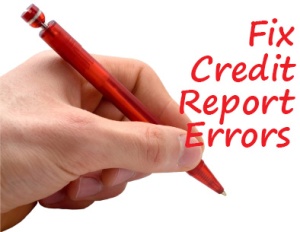Most people we meet in our daily life would say that there are a lot of things on their credit report that they could not understand. People mostly complain about not being able to decipher what the various abbreviations and the numbers on their credit report indicate. However, the truth is that credit reports are not that difficult to comprehend. In fact, if people were given a few tips on how to go about reading a credit report, most of them would be able to read it without much difficulty. In this post, we discuss the layout and the important sections in a credit report, learning which reading a credit report would be a cakewalk for you.
How to Read a Credit Report?
Though the credit reports that the three major credit bureaus (Experian, TransUnion and Equifax) provide to the consumers are not the same, the sections that all of them have are almost similar. Usually, the credit report from each bureau contains the following five major sections.
Personal Information
This section includes the personal information of the consumer. The information includes the name, phone number, address, employment details, and many other details. Very few consumers realize that the information in this section is more important than what many consumers presume. One quick tip – It is common for consumers to come across errors in this section. It is advisable that one must get the same rectified as soon as possible. It is important to do so because often wrong information can be a potential sign of fraud.
Credit Summary
This section includes information on your accounts. It includes the following account types – real estate accounts, revolving accounts, installment accounts, collection accounts and others. The section lists the following details about the different account types – the total number of accounts, the number of current as well as delinquent accounts and the balance in each account type. The section also summarizes the number of accounts that have been opened, closed, and the inquiries made against your credit during the last two years.
Account History
The account history section is one of the bulkiest sections in a credit report. It includes all the information about the credit accounts that you hold and the details about the payments made. Each credit account consists of the following major information – creditor’s name, account number, account type, the amount paid per month, date of opening the account, payment status, payment history, remarks, and more.
Public Records
The public record section is the most important section and any negative information in this section can severely impact the benefits that you get basis your credit report. Therefore, it is advisable to check this section for errors and keep this section clear. This section includes information such as judgments, state court records, bankruptcies, tax liens, and, overdue child support (as applicable in some states). Usually, any account related public record stays on your credit report for 7-10 years. The duration depends on the type of account listed.
Credit Inquiries
This section lists all the inquiries made by third parties on your credit report during the past two years. It lists all the hard as well as the soft inquiries that were made on your credit report. The difference between the two is that “soft” inquiries are the ones that are made by lenders for the purpose of promotions, however, “hard” inquiries are the ones that are made by lenders to check your credibility before approving a credit application.
A Word of Advice
Unfortunate but true, few people check their credit report on a regular basis. Some don’t even ask for the one that they are eligible for free of cost every year. People should order their credit reports every six months, if not quarterly. This would help prevent any credit related issues such as identity theft, rejection of a loan application due to inaccurate information on the credit report, and more. If you want to be financially successful, make sure you monitor your credit report on a regular basis apart from saving regularly and keeping a track of your spending.




